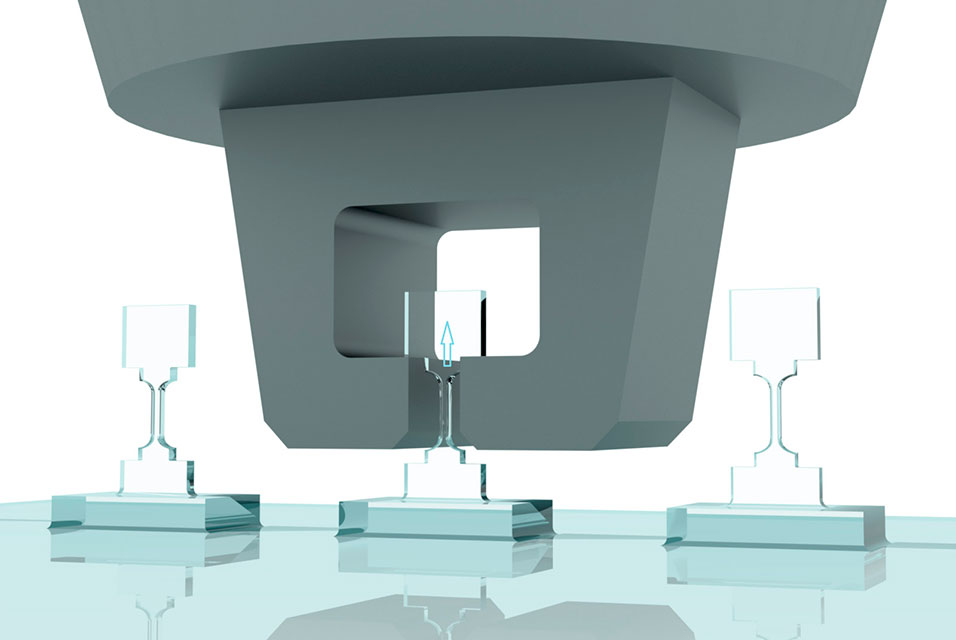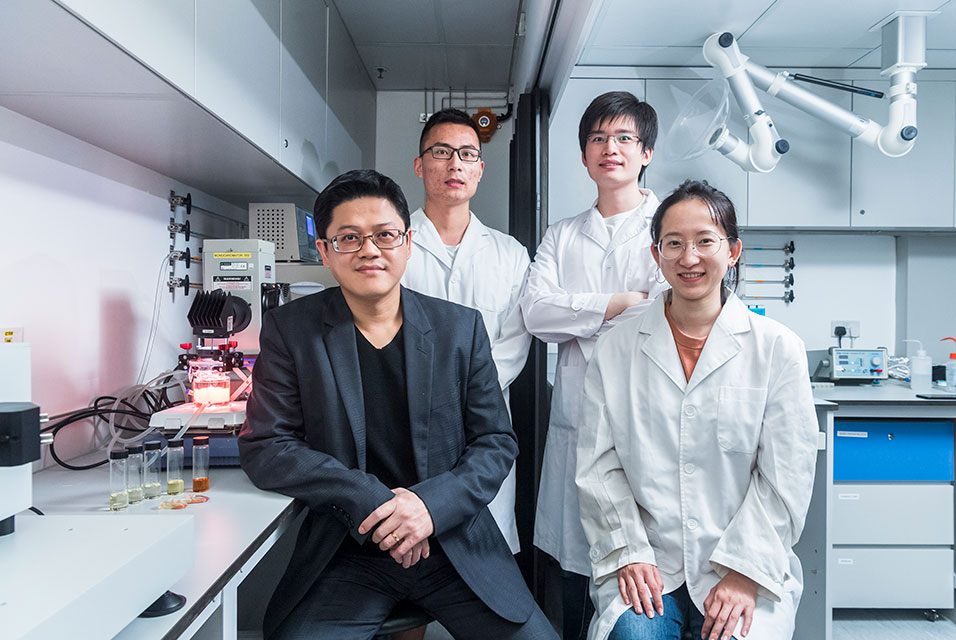HONG KONG.- The research results show that microfabricated single-crystalline diamond tensile sample can attain a maximum uniform elastic strain of up to 9.7%, which is close to the theoretical elastic deformation limit of diamond.
The groundbreaking research was co-led by Dr Lu Yang, Associate Professor in the Department of Mechanical Engineering (MNE) at
CityU, in collaboration with experts from Massachusetts Institute of Technology (MIT), Harbin Institute of Technology (HIT) and so on. Their findings have just been published in the prestigious scientific journal Science, titled “Achieving large uniform tensile elasticity in microfabricated diamond”.
With its ultrahigh thermal conductivity and exceptional carrier mobility, diamond is not only the hardest material in nature, but also a promising electronic material which can tolerate high power and high frequency applications.
However, one obstacle hampering the development of diamond-based electronic and optoelectronic devices is the “doping” challenge caused by the ultra-wide bandgap and its small lattice parameter. Dr Lu’s team was determined to resolve this alternatively by applying elastic lattice strain to control and change the electronic property of diamonds through a mechanical way.
“We microfabricated single-crystalline diamond into bridge-like structures from a solid piece of diamond crystal with a well-defined crystalline orientation, and achieved sample-wide large uniform strains under our tensile platform,” said Dr Lu. “We also show that in the process of uniaxial tensile straining, the change in the crystal structure of diamond will reduce its electronic bandgap, making its application in electronic device possible.”
In 2018, Dr Lu and collaborators had revealed for the first time that diamond nanoneedles could undergo ultralarge and fully reversible bending deformation. However, those samples were difficult to control and the resulting strain field was highly localised, which was not ideal for practical device application. This time, their team has developed advanced microfabrication processes for bulk diamond crystals in obtaining well-defined diamond bridge samples.
Experiment results found that diamond bridges of about 1 micrometer length and 100 nanometer thickness can sustain a highly uniform elastic strain distribution of about 7.5% across the sample, as characterised by Dr. Lu’s tailor-made nanomechanical tensile platform in a controllable manner.
By further optimising the sample geometry according to the American Society for Testing and Materials (ASTM) standard, the team demonstrated that some bridge sample achieved a maximum tensile strain of up to 9.7%. “It surpasses the local maximum strain value in our 2018 research,” said Dr Lu.
To assess the impact of such large elastic strains on the electronic property of diamond, the research team performed theoretical calculations according to the applied tensile strains in experiments and found that the bandgap of diamond generally decreases as the tensile strain increases, with the largest bandgap reduction rate down from about 5 eV (electron volt) to 3 eV at about 9% strain along a certain crystallographic orientation, which would greatly facilitate diamond’s electronics applications and boost the device performance.
To demonstrate the concept of strained diamond device, the team successfully microfabricated diamond array samples with multiple bridges, and realised the large, uniform, reversible straining of diamond bridge arrays.
“I believed that we are entering a new diamond age, and I hope in the near future we will be able to apply strained diamonds in the production of electronic devices,” said Dr Lu.
Dr Lu, Dr Alice Hu who is also from MNE at CityU, and Professor Li Ju from MIT, as well as Professor Zhu Jiaqi from HIT, are the corresponding authors of the paper. The co-first authors are The co-first authors are Dang Chaoqun, PhD graduate, and Dr Chou Jyh-Pin, former postdoctoral fellow from MNE at CityU, Dr Dai Bing from HIT, and Chou Chang-Ti from National Chiao Tung University. The other researchers from CityU are Dr Fan Rong and Lin Weitong. Other collaborating researchers are from Lawrence Berkeley National Laboratory, and Southern University of Science and Technology.
The research was funded by the Hong Kong Research Grants Council and National Natural Science Foundation of China.










